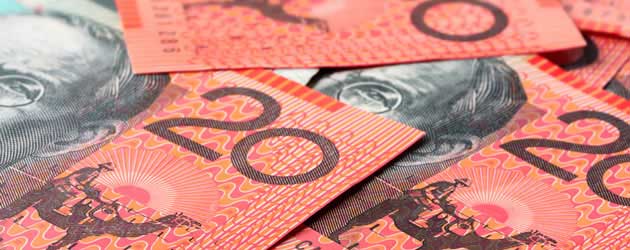
The Pound to Australian Dollar exchange rate (GBP/AUD) failed to register any permanent gains yesterday despite a disappointing British Retail Sales report sending Sterling lower against almost all of its other major currency rivals.
GBP/AUD declined by around -1.0 cents from 1.6980 to 1.6880 yesterday morning when it was announced that UK Retail Sales declined by -0.9% during August. The unexpected monthly contraction came as a result of a significant -2.7% drop-off in food sales. It is thought that Britons were less inclined to fork out on BBQ ad picnic food during August, as July’s heat-wave petered out.
Despite the soft monthly score, the annualised Retail Sales print showed that consumption, which accounts for over 60% of the UK economy, came in 2.1% stronger than this time last year, when the British public were thought to be too busy at home watching the Olympics and the Paralympics to go out and spend in high-street stores.
The underwhelming Retail Sales print led to a series of losses for the Pound: GBP/EUR sunk -0.8 cents, GBP/USD tumbled -0.6 cents, GBP/CAD declined -0.7 cents and GBP/NZD shrunk -0.9 cents.
However, the ‘Aussie’ Dollar gave up its gains during the afternoon, and GBP/AUD rose back to 1.6980, as investors considered the possibility of another rate cut from the Reserve Bank of Australia.
The Federal Reserve’s decision on Wednesday night to leave the current pace of asset purchases unchanged, at $85 billion per month, shocked markets and gave rise to a swell of risk appetite. With cheap Fed money still pumping into the system traders took it upon themselves to invest in asset classes that are seen to be slightly more risky, but that offer far higher profit yields. With an interest rate of 2.50% compared to 0.50% in the UK and Europe, and 0.25% in America, the Australian Dollar certainly falls under the category of a high- yielding currency.
Indeed, GBP/AUD tanked by -0.8 cents in reaction to the Fed announcement.
However, policymakers and business owners in Australia have been highly critical of the perceived overvalued Australian Dollar. The message coming from recent RBA literature suggests that the Central Bank is likely to cut interest rates further if the ‘Aussie’ continues to strengthen.
In essence, the, theoretically positive, decision from the Federal Reserve could paradoxically prove to have a negative impact on the Australian Dollar if investors continue to speculate over another potential rate cut.
Since the fourth quarter of 2011 the RBA has cut the benchmark interest rate by -225 basis points, from 4.75% to 2.50% and the Pound has strengthened by over 15 cents during this time. Another reduction would likely send GBP/AUD to a fresh 3-year high in the region of 1.7600.

Comments are closed.